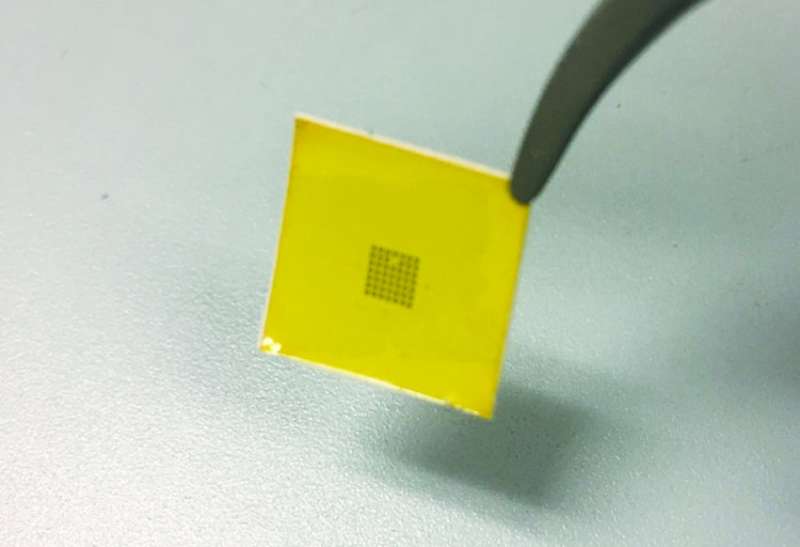December 7, 2017 report
Demonstrating high performance 2-D monolayer transistors on paper substrates

(Tech Xplore)—A pair of researchers, Saungeun Park and Deji Akinwande, with the University of Texas at Austin, recently demonstrated high-performance 2-D monolayer transistors on paper substrates at this year's International Electron Devices Meeting. At their presentation, they reported creating graphene and molybdenum disulfide transistors on a normal paper substrate and how well they worked—nearly as well as those based on plastic.
Electronics based on paper are still quite rare. They are typically relegated to printed organic electronic devices such as toys and packaging tags. But that may soon change as Park and Akinwande suggest their technique may be used to make devices with more capabilities.
Transistors are typically built using a plastic or semiconductor base. Such materials are chosen because they can withstand the manufacturing process and work optimally once delivered. But both materials cost significantly more than paper, which is why researchers have been eager to find a way to use the naturally grown material as a base, particularly for novel new products that are fast becoming part of the Internet of Things (IoT).
There have been several hurdles preventing the use of paper as a base for transistors: its uneven surface is not conducive to carrying current, it absorbs water, and it burns at normal manufacturing process temperatures. To get around these problems, the researchers looked for a coating that would prove capable without introducing such problems as reducing flexibility. After much searching and testing, the researchers settled on polyimide, a type of plastic that is already used as a base for some printed electronic devices. They found that when used as a coating on paper, it provided the necessary smooth surface and was also waterproof. Showing that it could survive the heat introduced during the typical manufacturing process took more work. After some trial and error, they found a precursor that, once applied to the paper, prevented it from igniting at a reasonable 230°C—a temperature that was also low enough that it did not cause the paper to warp. The final result was also thin enough that it was still as flexible as the original paper—the team proved this to be the case by making an origami figure out of it.
More information: First Demonstration of High Performance 2D Monolayer Transistors on Paper Substrates, S. Park and D. Akinwande, The University of Texas, International Electron Devices Meeting (2017), ieee-iedm.org/session-5-nano-d … on-nanotube-devices/
Abstract
In this work, we realize high performance transistors with graphene and MoS2 on commercially available paper substrates for the first demonstration. CVD graphene and MoS2 FETs feature record GHz operation and flexibility on paper, which indicates that high performance nanoelectronics on low-cost paper substrates for IoT and sensors is achievable.
© 2017 Tech Xplore





















